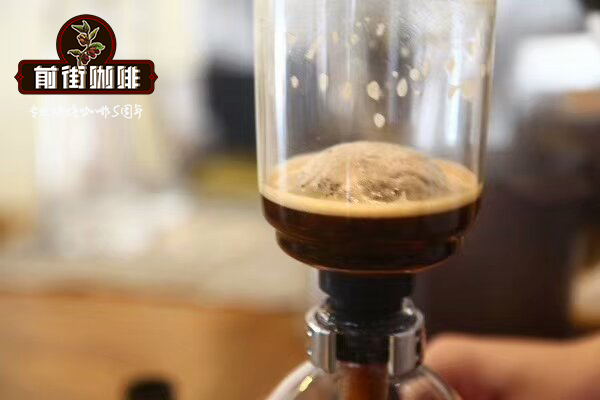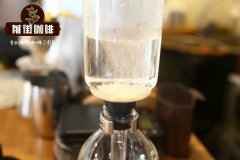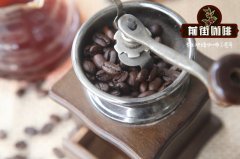The dosage standard of coffee beans in the siphon pot. How many coffee beans should be put in the siphon pot at a time?

Professional coffee knowledge exchange more coffee bean information please follow the coffee workshop (Wechat official account cafe_style)
Dosage standard of coffee beans in siphon pot
1. The standard of adding water to the lower cup of the siphon pot: generally, there are 2, 3 and 5 people in the siphon pot, in which 2 people represent 2 cups, each cup is 120ml, its maximum capacity is 240 ml, 3 people represent 3 cups, each cup standard is 120ml, its maximum capacity is 360 ml, 5 people represents 5 cups, each cup standard is 120ml, the maximum capacity is 600ml. If the scale on the siphon pot represents the capacity and marks the scale, the water capacity of the siphon pot is 120m.
2. Coffee powder consumption standard of siphon pot: generally, the amount of coffee powder needed for making a cup of coffee (120ml/ cup) in a siphon pot is about 15g. The coffee powder spoon corresponding to a siphon pot is usually 10g/ spoon, that is, one and a half tablespoons of coffee powder is needed for a cup of coffee. To make a few cups of coffee, you can add it according to the corresponding amount of coffee powder. For example, when making two cups of coffee, usually add 3 tablespoons of coffee powder, that is, 30g coffee powder.
3. To sum up: it takes 15 g coffee powder to make one cup of coffee, 15 g coffee powder to make one cup of coffee, and 30 g coffee powder to brew two cups of coffee. Of course, you can increase or decrease the amount of coffee powder per cup according to your taste, which generally fluctuates between 10 and 20 g.
one
The ratio of coffee powder to water is 1:12
The standard cup of siphon pot is 120ml water ratio 10g powder extraction.
The siphon pot can be brewed at least 1 cup, but because the amount of water in a cup of coffee is too small, and there is water at the bottom that will dilute the coffee, when we brew a cup of coffee, 12g powder can also be used. If it feels light, it can be matched with 120ml water.
two
Siphon pot coffee powder grinding roughness and fineness
The grinding degree is similar to that of white granulated sugar; the medium particle size siphon pot extraction is the best, taking Little Eagle Mill as an example: scale 3.5; Fuji Ghost Tooth Mill as an example: scale 3; heroE1 electric bean grinder for 10 seconds.
The finer the coffee powder is ground, the stronger the bitterness is, the thicker the grinding degree is, and the weaker the bitterness is, which is due to the different size of the surface area of coffee powder covered by hot water.
three
Contact extraction time of coffee powder and water
Timing standard: the timing starts as soon as the water touches the powder, and ends when the water stops coming into contact with the coffee powder (with an hourglass or an electronic timer).
Most single coffee (light roasting) extraction is about 50 seconds; (medium-light or medium-deep roasting) extraction is about 60 seconds.
four
To influence (water flow) by stirring.
The purpose of stirring is to let the coffee powder disperse evenly in a short time, so that the coffee powder is in full contact with water and dissolves the capacitive nourishment. Draw a circle clockwise to stir, one is pressure, the other is stirring, so that the coffee powder can be fully dispersed; the number of times of each stirring is about 3-5 times, depending on the situation-that is, if the coffee powder has dispersed three times, there is no need to continue stirring.
The stirring is divided into three parts:
The first time: when the coffee powder is poured in, the second time: it is boiled halfway. The third time: turn off the heat and stir again before the end.
five
Control of heat (heating source)
If it is a gas furnace heating source that can adjust the firepower, when the water is boiled, the heat needs to be adjusted to an appropriate size, the coffee is easy to scorch off when the fire is too big, the temperature is too small, the temperature is not enough to extract, and even the water from the upper ball will flow back to the lower ball, the appropriate heat is about the size of an one-dollar coin where the flame touches the next ball.
If the apparatus is equipped with an alcohol lamp, it is recommended to adjust the wick to the appropriate size at the beginning and continue to heat it; the heating temperature is constant and the extraction rate is higher.
Heat the light-wave stove to the maximum at first, insert the upper pot obliquely into it, but don't plug it vertically, wait for all the water to go up, and adjust the knob to one point to extract coffee.
six
When do you add the powder?
After all the water in the lower kettle flows like the upper pot, the powder is added; stirring, timing, extraction (with hourglass or electronic timer)
If the powder is poured in before the water rises, at this time, when the water rises, the lowest coffee powder has invaded into the hot water and begins to extract the coffee, while the upper coffee has not yet touched the hot water, so there will be a problem of different extraction time; some coffee is not extracted enough, while some coffee is already over-extracted.
seven
Wipe the ball after turning off the fire.
The purpose of brewing more than 2 cups of coffee is to make the lower ball lose pressure due to air cooling and contraction, so that the coffee liquid flows quickly from the upper seat to the lower ball. In this process, the faster the decline of coffee, the better, once the time is lengthened, there will be excessive extraction, bitterness, astringency will be inevitable.
eight
The skill of pulling up the upper seat
Three words: push, pull and turn
The left hand holds the handle of the siphon pot, and the right hand holds the top of the upper seat of the siphon pot and pushes it forward, so that after there is a gap between the upper seat and the lower ball, circle the circle to the left or right, and you can easily pull it out when it is loose. (remember not to pull up hard)
nine
The more round the hill bag, the more successful it is to brew coffee?
In the past, it was thought that making siphon pot coffee with a mountain bag is a good coffee; in fact, it has a lot to do with stirring, as long as the school (clockwise) stirring method after the fire is turned off. This is not the criterion for judging whether the coffee is good or bad, it is determined by the mixing method. Of course, coffee with mountain bags looks beautiful. I want to drink it!
ten
Can you distinguish the freshness of coffee powder when stirring?
When coffee powder absorbs water, it foams due to the release of carbon dioxide gas, which shows whether the coffee is fresh. If there is little or no foam in the first place, it means that your coffee may not be fresh for a long time, or it may be too coarse.
If you find that as the number of stirring increases to the end, the foam becomes less and less, stirring too much.
END
Important Notice :
前街咖啡 FrontStreet Coffee has moved to new addredd:
FrontStreet Coffee Address: 315,Donghua East Road,GuangZhou
Tel:020 38364473
- Prev

30 points for attention in siphon pot coffee brewing. What kind of coffee beans are suitable for siphon pot?
Professional coffee knowledge exchange more coffee bean information Please follow the coffee workshop (Wechat official account cafe_style) siphon pot a coffee pot with the taste of experimental utensils and fun to use, making a cup of coffee is as exciting and exciting as doing a chemical experiment. For some coffee beans with unique flavor and suitable for a single product, cooking in a siphon pot can show more distinctive style.
- Next

How to make siphon pot coffee tastes good _ what kind of coffee beans do you choose from siphon pot _ Starbucks siphon coffee tastes good
Professional coffee knowledge exchange more coffee bean information Please follow the coffee workshop (Wechat official account cafe_style) siphon pot coffee brewing method is easy to control, easy to learn, now to sum up the use of siphon pot: the first step: pour water into the glass sphere under the siphon pot, the pot body has a cup scale, friends can according to their own number of cups
Related
- What is the Philharmonic pressure? How to use Philharmonic pressure to make delicious coffee
- Why does a hand grinder have more fine powder than an electric grinder?
- In addition to the hot mom, what is the difference between the versions of EK43 | ditting and Mahdi ek43?
- What kind of equipment do you need to make coffee by hand? Introduction to novice starter cooking equipment tools
- Espresso needs to be ground how thick and thin scale entry Italian Coffee Machine Bean Grinder investigation and Grinding course
- How much does it cost to open a small private cafe? How much does it cost to learn coffee? How to operate it?
- The difference between the flavor characteristics of hand-brewed coffee and coffee maker is hand-brewed coffee really better than coffee maker? Can I use a coffee machine to make coffee beans by hand?
- The difference between 01 and 02 of hario v60 filter cup what is the difference between 01 and 02 filter cup opening and cooking flavor
- What's the difference between the smart cup and the French kettle? Which is better, the French kettle or the Smart Cup?
- What's the difference between a smart cup and a V60 filter cup? The difference between the taste of smart cup and hand-brewed coffee

